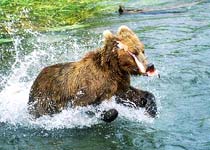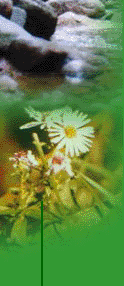|

For centuries, many cultures have relied on diadromous fish for survival. However, with the modern rapid growth of human environmental hazards (such as dams and logging), diadromous fish species are being depleted and thus the foundations of many societies are threatened. If we continue to destroy their habitats and obliterate them at such a devastating rate, they will become extinct and numerous cultures will suffer.
In our world today, more people are learning of the concern for the survival of diadromous fish. However, as cultures industrialize the fish are forced to overcome more menacing obstacles. Dams for example, they are being constructed world wide to enable steady access water to regions vulnerable to floods and droughts. But at the same time, diadromous fish populations are greatly affected by dam construction. Situations like these concerning the survival of diadromous fish and the progress of humans creates some controversy.
We the authors believe that diadromous fish are in a difficult position, and its our fault. There are things that we have been trying to do to improve their situation, such as constructing dams that control water flow and still enable the diadromous species to spawn. This is called the salmon ladder, as seen on our solutions page. There are also many volunteer acts and clean ups; every little thing can make a difference. However, it is simply not enough. We need to take more serious action in order to see some real results. It has already been attempted to bring this situation to government officials, and put certain species of diadromous fish on the endangered species list (Endangered Species Act, ESA). However, the act is new and it is too soon to tell whether it will have noticeable results for the salmon in the Pacific Coast. Although dams have caused quite an uproar in the environmentalist community, logging has as well. Logging is serious because of the affect it has on the temperature of the water. Many rivers that relied on the shade of the trees to stay cool have risen in temperature, enough so to kill salmon. This is because bacterial and parasitic diseases attack the gills, cutting off their oxygen. This disease was always around the West, but it becomes much more common when the temperature of water rises, and the fish are closer together due to low water flow (San Francisco Chronicle). Recently, because of the Bush administrations plan to navigate more water to the farmers rather than allow it to flow to the fish, thousands of salmon have died. Federal fisheries managers predicted the plan would hurt the salmon in the Klamath River downstream, and tribal biologists agreed. However, the Bush Administration claimed differently.
There is no evidence showing protected fish require the water that otherwise irrigates Klamath crops, they say.
There are some people out there right now that are of the opinion that we should keep things the way they are. Various loggers say that cutting down trees is part of human nature, and if nature cant deal with it, tough. Trees fall naturally all the time, whats the difference if it was man or nature that brought it down? However, nature revives itself at its own rate in order to keep everything growing. Humans cut down trees at a pace that is too fast to allow nature to replenish itself as it would naturally, so there in lays the problem (The Handy Science Answer Book).
We as a species need to find a way to merely use what resources we need, and not dwindle or destroy them for future generations. The salmon wont be there forever if we keep this up, and we want to see our kids know what salmon are and how they taste! |




